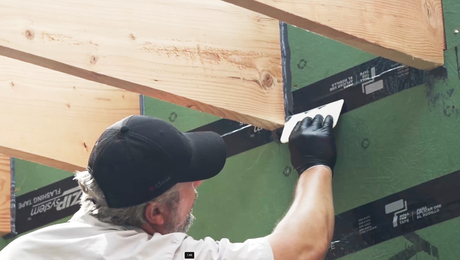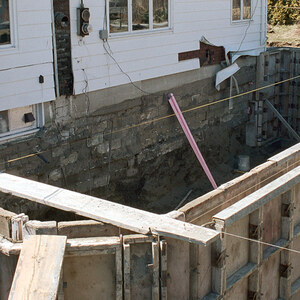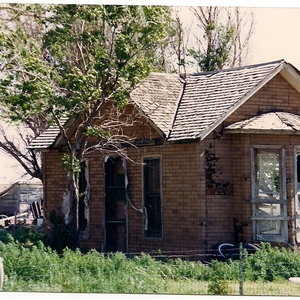Installed the unit for a customer. That was easy enough. Now comes the venting. Using 6″ straight up thru the roof. Maybe 6′ total. I go to assemble the plate and notice that, with it srewed to the 3X10 collector, there are lots of gaps and air leaks. What sort of sealant should be used to alleviate this problem? Or… is it actually supposed to have holes and gaps to allow wayward fumes/smoke to be sucked into the pipe? Naww. That can’t be right!?
Discussion Forum
Discussion Forum
Up Next
Video Shorts
Featured Story

Michael Hindle explores the efficacy of deep energy retrofits and discusses essential considerations for effective climate mitigation.
Highlights
"I have learned so much thanks to the searchable articles on the FHB website. I can confidently say that I expect to be a life-long subscriber." - M.K.

















Replies
Usually when we vent those, we'll stay 3x10 through the cupboard then transition.
You should be able to use regular metal tape on the duct work. Not duct tape, but the metal tape. It usually has a "UL" stamp on it.
Family.....They're always there when they need you.
Are you talking about leaks in the actual microwave, or just the ductwork? The metal tape works well for the ductwork, but I never paid much attention to the housing for leaks. I guess I would tape up any huge leaks, but since they would be "in" leaks I wouldn't be too concerned. I have done a bunch and not had any problems with leaks.
Just talking about the ductwork. Even the 3X10 transition is not really sealed and with the fan on high I can feel air blowing thru the fold cracks. And where it fits on the top of the microwave there are 45s cut off of the corners of the mounting plate that expose openings in the squarely cut opening to the fan. So, metal tape everything I suppose?
When you figure out how to get your big old hand with a roll of metal tape into that cavity behind the ductwork inside the cabinet, please let me know. ; )"It depends on the situation..."
You can also use a latex mastic to seal the ducts.Don't know if you would have any better luck working that behind than the tape..
.
A-holes. Hey every group has to have one. And I have been elected to be the one. I should make that my tagline.
Yes, metal tape to seal all the openings.
I tape the transition piece prior to even lifting the unit into place.
They can't get your Goat if you don't tell them where it is hidden.
Yup. I like the metal tape with paper liner because I find it easier to slide behind the duct, then peel back the liner. I have never tried the latex mastic Bill suggested but I guesss it would work.
Hope this helps. Rich
That's not gonna work for me. This micorwave/vent unit is hooked onto a bracket on the back wall at a tilted down angle, then pushed up straight to the bottom of the cabinet and held with screws thru the cabinet. This positions the micro snug against the bottom of the cabinet. Taping the collector piece to the micro preinstall won't allow the piece up thru the slot in the cabinet. I don't know. I will figure it out somehow. But it sure looks like the microwave manufacturers and the cabinet makers didn't put their heads together on this one very well.
Edited 9/4/2008 10:08 am by DeepCove
I finished mine up about 2 weeks ago. I had to buy a 3x10 damper that sat in a hole cut in the bottom of the cabinet. It was about 3/4 deep, so the metal edges covered the exposed plywood edged. The micro just sat in there, no mechanical connection between the damper and the microwave. I suppose a bead of caulk around the mircowave opening before you install it tight to the bottom the cabinet to seal it would work?I used foil tape everywhere and a couple of small pinholes I had left I used some leftover latex painters caulk. Totally airtight. I used 3x10 all the way up to a wall vent.